
After the Break – What Worked and What Didn’t in 2012 Gypsy Queen
There are no doubts that one of Topps' hottest baseball products last year was 2011 Topps Gypsy Queen. It was a new product that had a limited print run, was loaded with low-numbered hits, and surprised just about everyone. For me, 2012 Topps Gypsy Queen Baseball was one of my most anticipated releases of the year.
Last year I was limited to 15 cases, but this year I increased my order to 25. I had realistic expectations as I reviewed the pre-release product information and knew there would be more of it produced and more case breakers busting it. I knew 2012 would not be a repeat of 2011. That feat would be near impossible.
Many things worked for 2012 Topps Gypsy Queen. But, in my opinion and the opinion of many of the collectors I sell to, some things did not.
Before diving in I want to address the production level. Production was higher this year. However, that was expected and it is still much lower than most hobby releases. There were an estimated 900 or so hobby cases produced in 2011, whereas 2012 odds look to be closer to 2,500 hobby cases. This is still a manageable number and about the range that this product should fall into. It still allows for some better autograph pulls and some lower-numbered items. It may have been hard to swallow looking over some of the odds compared to last year's release. Still, overall odds were nice and not as tough as many other sets after seeing similar production increases.
What Worked in 2012 Topps Gypsy Queen Baseball
1. On-Card Autographs
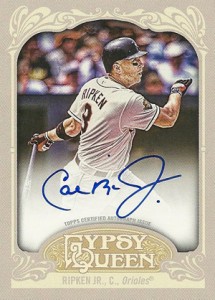 Once again, this year's release saw two on-card autographs per box with a checklist that mixed current players with a variety of retired stars. Sure, some of the retired players are tough to pull but, as a whole, I got some of the best autographs I ever have in a single product. Even though I missed out on Ken Griffey Jr, Willie Mays, and Yu Darvish, I was still very pleased to get autographs of Sandy Koufax, Hank Aaron, Cal Ripken, Don Mattingly, Frank Thomas, Dennis Eckersley, Al Kaline, Bob Gibson, Ryne Sandberg, Matt Kemp, Brett Lawrie and Eric Hosmer. In some cases, I got multiples of those guys.
Once again, this year's release saw two on-card autographs per box with a checklist that mixed current players with a variety of retired stars. Sure, some of the retired players are tough to pull but, as a whole, I got some of the best autographs I ever have in a single product. Even though I missed out on Ken Griffey Jr, Willie Mays, and Yu Darvish, I was still very pleased to get autographs of Sandy Koufax, Hank Aaron, Cal Ripken, Don Mattingly, Frank Thomas, Dennis Eckersley, Al Kaline, Bob Gibson, Ryne Sandberg, Matt Kemp, Brett Lawrie and Eric Hosmer. In some cases, I got multiples of those guys.
Sure I still got 21 Marlon Byrd autographs, but the mix was good overall. Collectors also seem to really like these autographs. One example is my Cal Ripken Jr. It sold better than the one I sold from 2012 Topps Tribute, which was on-card, numbered to 49 and came from a product with a much higher price point. Several of the 2012 Topps Gypsy Queen autographs have been trading at higher rates than other releases this year. Topps has a winning formula here. I hope they continue it if Gypsy Queen returns in the years to come.
2. Base Set Checklist
For a 300-card base set, it sure does hold value well. And why not? It is loaded with Hall of Fame players and recently retired stars, some of which we do not see very often. Of course, there are current players and rookies to be found, but not every set has non-SP legends like Gypsy Queen provides. And it's affordable too.
3. Mini Cards
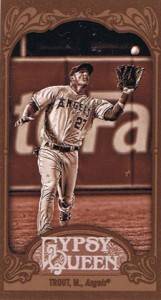 With a strong base checklist it makes the minis that much more fun. The base, Black Border, and Sepia minis seem to be the most collectible. Some also enjoy the different backs of the minis, but with the same fronts it is not the same as pulling a black or a sepia version. The minis that returned this year remained popular amongst collectors. Having the insert cards as minis is a unique inclusion to this set again and provide even more great legends to collect.
With a strong base checklist it makes the minis that much more fun. The base, Black Border, and Sepia minis seem to be the most collectible. Some also enjoy the different backs of the minis, but with the same fronts it is not the same as pulling a black or a sepia version. The minis that returned this year remained popular amongst collectors. Having the insert cards as minis is a unique inclusion to this set again and provide even more great legends to collect.
Also, the addition of new autographed mini short prints numbered to 10 was huge. The cards look great and the sales of these have been very high. In other products, mini autographs usually come framed. The unframed mini autographs are a nice change here, as long as the condition isn't impacted, which is sometimes the case with regular mini cards.
4. Four (or More) Hits Per Box
For the price point of 2012 Topps Gypsy Queen, four hits is a very nice spot. Bonus hits, such as printing plates, Gypsy King autographs or relics, make great additions. The framed mini relics often outsell the regular-sized relics, but usually just by a small margin. It would be nice to see different players within the two sets or at least different photos. But, overall getting one regular relic and one framed mini relic per box works. This makes for far fewer doubles and more for collectors to chase. It is another unique inclusion to this product and a welcomed one at that.
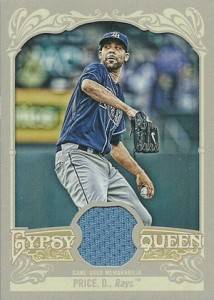

What Needs a Little Work
1. Set Configuration (Especially the Variation Short Prints)
In all my years of case breaking I have never received so many questions regarding a set's regular short print cards. By doing base set variations instead of a regular run of short prints like last year, it caused a great deal of confusion and frustration to collectors (especially when some short prints are very difficult to recognize). This undoubtedly hurt the value and secondary market for these cards. Personally, many of my buyers backed away from the set and the short prints can often be found on eBay without receiving a 99-cent bid.
Because of this, the 395-card master sets (base + SP + inserts) took a dive, trading below $100. By comparison, similar 2011 Topps Gypsy Queen master sets hung around $250-$300 for months and still trade for up to $200.
Part of the problem is that last year the short prints were card numbers 301-350. They had different players, separate from the first 300 cards. Most everyone was expecting similar numbering again this year. Even if the cards were still photo variations, this would have been a much better choice by Topps.
Further adding to the confusion was the fact that the mini card set did indeed have cards #301-350 again this year and were also different photos of players within #1-300. The minis also had the 50 SP photo variations that were included in the regular-sized cards that were found in the hobby exclusive 10-card mini box topper packs. On top of all that, the minis also had an additional 41 cards within the 300 cards, which were also photo variations. Moreover, some of the original 50 regular-sized SP had different photos on their mini cards (see Joe DiMaggio as one example). Confusion piled on to confusion.
Furthermore, the 91 supposedly short printed mini variations were not actually short prints. With each hobby box yielding seven of the 91 exclusive mini cards, that meant a set could mathematically be had every 13 boxes. The regular minis numbered 1-350 only fell 11-12 per box. This means that it would take a minimum of 30-32 boxes for a 350-card set. My 25 cases yielded five 350-card mini sets and 13 sets of the 91-card mini variations.
It almost seems as though this set was thrown together quickly or last-second changes were made and not everything was caught and corrected. The already-mentioned DiMaggio cards, and the Wade Boggs and Tony Gwynn variations that have only subtle cropping differences come to mind. There are also the Cal Ripken Jr. cards that appear on #253 and #344 using the same photo and same insertion ratios.
If Topps could fix this one area, it would mean major improvements for the Gypsy Queen line as a whole. But have they lost some collectors already? Some may not come back. At least some of my loyal buyers have said such things as they were not pleased.
I try to report what those I deal with tell me, rather than necessarily give my straight opinions. In this instance, as a case breaker, with the lack of knowing in advance about the changes from the 2011 set, it did prove rather frustrating to myself.
Topps, please go back to numbers 301-350 for the regular-sized cards as well, and perhaps not so many mini variations. Make the mini variations tougher like the first release when they were one per box and players like Derek Jeter commanded $75+ each, not 99 cents.
2. Mini Cards
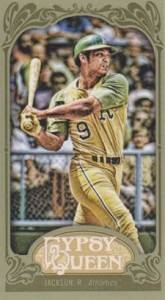 Lots of collectors really dig mini cards. I have some very hardcore collectors that will only collect sets with mini cards. With Topps adding mini inserts to it's flagship line both last year and this, plus adding them to Gypsy Queen and Lineage last year, the company understands the appeal of the smaller cards too.
Lots of collectors really dig mini cards. I have some very hardcore collectors that will only collect sets with mini cards. With Topps adding mini inserts to it's flagship line both last year and this, plus adding them to Gypsy Queen and Lineage last year, the company understands the appeal of the smaller cards too.
Mini card collectors are also passionate with how they are done. They want a set that holds its value and is a challenge to build, but not impossible. By adding so many different parallel versions, it almost becomes overkill. The regular base set of mini cards become harder and harder to collect. A perfect example of this is Topps Allen & Ginter where there are several non-baseball insert mini cards that are easier to pull than the base mini cards. In fact, with Topps Allen & Ginter, you will yield more individual "short print" singles numbered 301-350 (1:12 packs) than you will non-SP 1-300 minis. It is not even close any more.
This year Topps removed one of the best mini sets they have made in the #/10 Leather minis. Sure, they were 1:75 packs last year and would not have been so easy this year, but get rid of them? Instead Topps elected to add two new parallel mini versions: Straight Cut Back (1:6 packs, same as the GQ Red Backs already included) and the Green (or 'Puke') Borders (1:24, becoming the toughest mini parallel in the hobby packs). Why introduce a new mini with a different back and inserted at the same ratio as the Red Backs?
I can understand the one-per-box Green-Bordered minis better. It gives collectors a very tough set to chase. Whether you like the color is beside the point. But again, when these are added, it takes regular minis away which is what most collectors chase after and can afford. It really should make the regular mini cards that much more valuable as they are tougher to pull.
What was disappointing was how often the easier to pull Black-Bordered minis would outsell the tougher Green-Bordered minis. Several factors could account for this: they're new, they are too difficult to collect, not knowing what they were, they use a non-traditional color that's not very attractive, and the blacks have already been established as a favorite in Topps Allen & Ginter.
The mini set should have mirrored the base set and their variations, and then maybe have it's exclusive 50 mini cards again at tougher insertion ratios as they were 2011. I can appreciate tweaking a second-year product, but this one feels like it went a step or two too far. Mini cards sell themselves and do not need gimmicks or confusion. Sometimes less is more.
3. Fewer Low-Numbered Hits
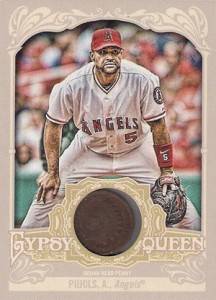 If a product is going to increase in production, why remove the popular low-numbered parallels? I already mentioned the Leather minis. 2011's Stamp Collection was another parallel set numbered to 10 as well. This year, Topps replaced the stamps with Indian Head Penny Relic cards. I understand the changing of what was included and welcome the change each year. It was the right move, in my opinion, and my buyers tend to agree.
If a product is going to increase in production, why remove the popular low-numbered parallels? I already mentioned the Leather minis. 2011's Stamp Collection was another parallel set numbered to 10 as well. This year, Topps replaced the stamps with Indian Head Penny Relic cards. I understand the changing of what was included and welcome the change each year. It was the right move, in my opinion, and my buyers tend to agree.
What went wrong here is last year the entire 350-card set was paralleled making a fun chase, but at 1:93 packs a manageable one for some. This year, with production increases, Topps decided to make the Indian Head Penny Relics only a partial parallel with just 100 cards. This made the cards that much more difficult to pull at 1:1,065 packs. It would make sense to make this a 350-card set once again, and perhaps make a new value-added hit numbered to 50 or 25 as well.
Last year, I pulled up to seven or eight cards, including printing plates, numbered to 10 or less per 10-box case. This year, that number, with printing plates and the new #/10 mini autograph cards, dropped to just one or two per case. I pulled six Indian Head Penny Relics in 25 cases.
4. Gypsy Kings Relics and Autographs
Last year, the Gypsy Queen relics and autographs were somewhat surprising, usually selling for $15-$30 each. In 2012 Topps Gypsy Queen, they were changed to Gypsy Kings and were a bit tougher to pull (again, this was expected). However, the demand and secondary market for these cards is almost vacant. Many of the cards are trading for less than $10. They are made-up players with manufactured bat relics, autographs and pictures of Topps employees. Something new must happen here or simply eliminate these in future releases. Surely Topps can think of something better now that they've had their fun.
2012 Topps Gypsy Queen Wrap-Up
Overall, I continued to hear that collectors liked the design, checklist, and on-card autographs. The relics of retired players became very difficult to pull this year compared to last year, but collectors were still glad to have them. The framed mini relics, in particular, were popular. I enjoyed breaking the product and the inclusion of the SSP Yu Darvish also added to the thrill this year
I do hope that some, if not all, of the weaker areas are reviewed and possibly tweaked to add more value. If nothing else, the short print cards in both the base and mini sets must be dealt with. If the configuration sticks around, more information must be readily available in advance.
Normally, case breakers can find the information and pass it along. This time, even case breakers had trouble. And by the time explanations were floating around, some of the information was wrong or incomplete, and led to further questions. Many collectors simply gave up or did not know what was right. This led to a crash for both the short print variation and set markets.
Some liked the design, some did not. For me, I prefer the 2011 look with Gypsy Queen written across the top of the card, rather than the fancy border. The autograph cards looks so much better being a lighter color border with the yellow backs.
I hope Gypsy Queen is around next year and fixes some of its issues. I enjoy the set. And while it is not for everyone and may never be at the production levels of Topps Heritage or Topps Allen & Ginter, it is still a nice addition to the company's annual lineup, particularly with its spectacular base set and autograph checklists.
Shop for 2012 Topps Gypsy Queen with brentandbecca:
 | Making purchases through affiliate links can earn the site a commission |


























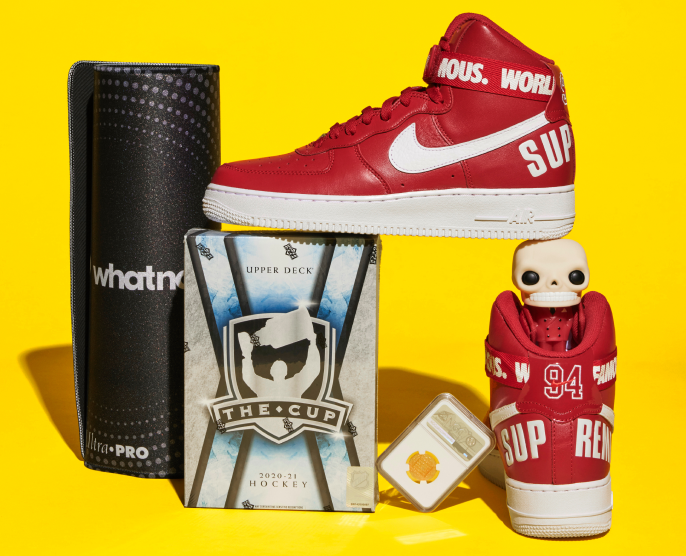
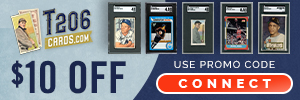
gary buesing
As I am going thru my base set of minis, I noticed some backs have brown ink and some have black ink printing. There is a noticable difference. Did Topps do this on all cards as I have quite a few with both color inks, Or do you think it is from different print runs?
Thanks
Gary